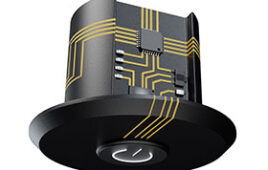With 3D printing technologies emerging rapidly and a wide variety of industries looking to adopt 3D printing to streamline production and save on material costs, there is a lot of potential for market expansion. In fact, the research firm Canalys has forecast the 3D printing market, which includes 3D printer sales, materials, and associated services, will continue to experience rapid growth and reach US $16.2 billion by 2018.
Canalys Senior Analyst, Tim Shepherd, points out that “this is a market with enormous growth potential now that the main barriers to up-take are being addressed. Advances in technology are yielding faster print times and enabling objects to be printed in greater combinations of materials, colors, and finishes. Crucially, prices are also falling, making the technology an increasingly feasible option for a broad variety of enterprise and consumer uses, restricted only by computer-aided design competencies and printer availability – both of which are set to improve significantly.”
While most analysts still view 3D printing to be in its infancy, the technology is already well established in the production of prototypes and product models in quite a few industries. What’s more, it is being strongly considered a viable manufacturing tool for a number of industry sectors, including aerospace and defense, medical, engineering, and architecture. Specific concerns exist around preventing counterfeiting, and those are further complicated by a requirement to make 3D print jobs uniform and replicated with 100 percent accuracy no matter what particular printer is utilized. When combined, these challenges create a bit of a “Catch-22” situation.
Counterfeiting Scenarios
For industry in general, protecting individual property rights is a primary concern, particularly when you consider the possibility of unauthorized access and use of proprietary 3D printing files. Unlike counterfeiting in parts manufacturing today, where telltale imperfections or design flaws can often aid investigators in identifying counterfeit parts and eliminating them from the supply chain, 3D printed parts are created from electronic files and specifically designed to be replicated exactly. It’s therefore much more difficult to determine what might be a counterfeit part.
When you consider aerospace and medical are the two major market sectors expected to drive market expansion for 3D printing, the issue of safety is quickly brought to the forefront. Commercial airplanes, for example, are designed and constructed using hundreds of thousands of parts, and quality inspectors are continually working to ensure counterfeit parts don’t find their way into the supply chain. Clearly, this process becomes more challenging when dealing with 3D printed parts. It goes without saying that nobody would want to fly on a plane built with anything other than parts from a fully certified and authorized supplier. The same holds true in the medical sector where it’s possible that 3D printed parts will be used in internally implanted devices, medical instruments, and other medical items.
Another area of concern is related to potential counterfeiting scenarios where advanced 3D scanning is utilized. Take, for example, the works of an artist or sculptor. The combination of 3D scanning and 3D printing could make it possible for unscrupulous individuals to obtain limited editions of works, employ 3D scanning technology, and then print knock-off copies to sell more widely and at a much lower cost.
These few examples that can be envisioned today are likely to become more complex as the technology evolves. However, they do bring up the question of what needs to be done to address the possibility of counterfeiting using 3D printing technologies.
Standardization is Key
The IEEE Standards Association (IEEE-SA) is already heavily engaged in standards development for 3D printing, particularly in specifying the design and construct of 3D printing files. IEEE P3030TM is focused on standards development to establish quality metrics and accuracy grades so that printed materials at the consumer level can be assembled faultlessly while also addressing issues related to privacy, security, and control measures.
From a standards perspective, initial efforts to address counterfeiting issues related to 3D printing are being focused on building mechanisms into the 3D file design that would require the input of a password or authorization code to open the file. Another measure would be to build into the standard a means for a differentiating feature to be included on authorized print jobs – a type of watermark, for example, similar to traditional currency anti-counterfeiting measures. Additionally, as more and more types of printing materials come into use, it could be possible to limit the supply of certain materials to enable better control over sensitive 3D printed items.
It’s clear that there is much work to be done to ensure that 3D counterfeiting issues are addressed early and effectively. IEEE is taking a lead in 3D printing standards development with the caveat that buy-in from 3D printer vendors on standardization is essential to combat counterfeiting and prevent unauthorized designs from being printed. In light of this, IEEE extends an open invitation to 3D printer vendors to join relative working groups and/or participate on some level in standards development for 3D printing that protects individual property rights and helps increase safe and sound manufacturing processes.
Filed Under: 3D printing • additive • stereolithography, Industrial automation




